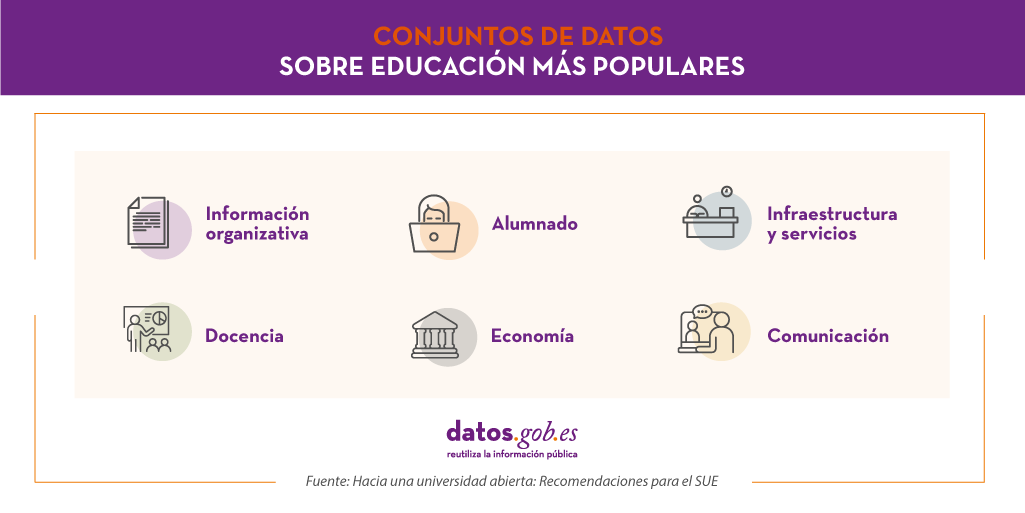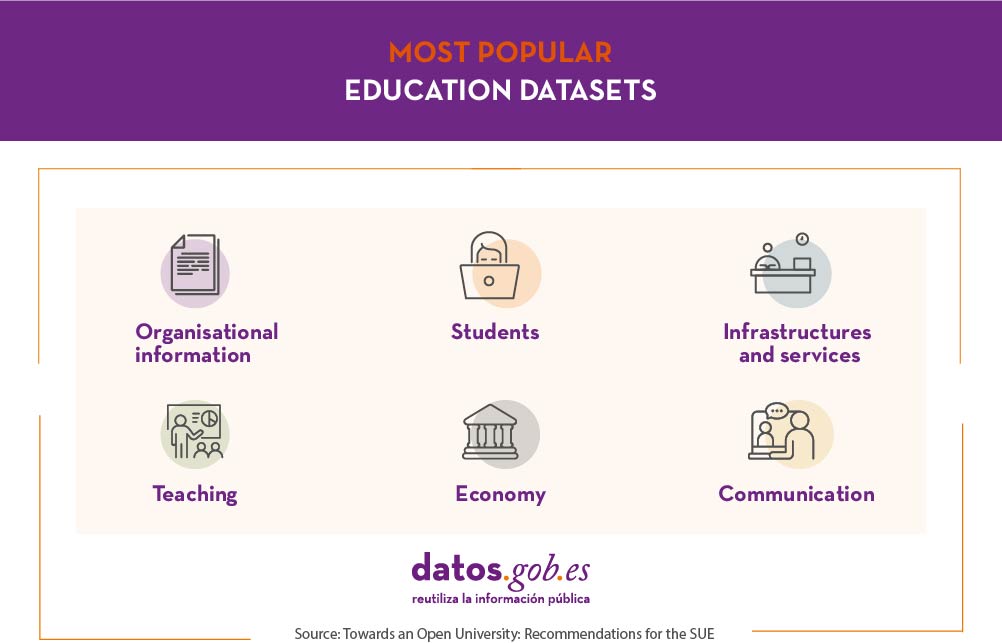
Education is one of the most influential factors in the progress of individuals and societies, promoting equal opportunities and the reduction of inequality through knowledge. But to achieve these advances, equitable and quality education is necessary. Open data can help achieve improvements in both directions.
The role of open data in education
Open data has different roles in education. On the one hand, they can serve as a basis for creating educational resources that facilitate more attractive learning. In any subject, students can be offered work based on the analysis and interpretation of information, which helps them to develop critical thinking. The use of open data is usually well received by students, as it boosts their motivation to work with real content and helps them to develop a data culture that is much needed in today's professional environment.
But in addition to being an educational resource, open data can also be used to drive improvements in the education system through the development of solutions and tools that facilitate effectiveness, efficiency and informed decision-making, responding to a wide range of challenges in the education system. This is the focus of the 3rd edition of the Aporta 2020 Challenge (in this article you can find a series of tips for implementing a solution of this type).
Open data on education
The educational data that institutions open up, and which can be used to integrate into this type of solution, are very diverse. The report "Towards an Open University: Recommendations for the SUE" details some of the most common education data sets, as shown in the graph below.

Below are some examples of data included in these categories:
- Organizational information: organization charts, profiles and personnel directories, job offers.
- Teaching: study catalogues, calendars, mobility programmes, educational content catalogues.
- Students: profiles, scholarship programmes, academic performance (such as grades or dropout rates), satisfaction rates.
- Economy: accounts, budgets, tenders, grants and subsidies.
- Infrastructures and services: buildings, geospatial information, images of the buildings, accessibility information, equipment, catering, computer or library services.
- Communication: events, news related to the university.
These datasets are of interest to those responsible in different governments for evaluating educational results and making political decisions to promote improvements, but also to parents and students themselves who have to choose about their future.
Moreover, these data, like all data, are susceptible to cross-checking with others to generate greater knowledge. For example, geospatial, demographic or social data can be used to conduct analyses of schools based on population density, access to services, internet connectivity or other factors.
What kind of education-related data can I find in datos.gob.es?
In datos.gob.es there are currently more than 1,600 data sets related to the Education category. The most important publishers of this type of data are the Government of Aragon, the National Institute of Statistics, the University of Zaragoza and the Autonomous Community of the Basque Country.
Of all these datasets, we have compiled some examples of the most popular ones and the formats in which they are found.
At state level
- Red.es. Location and equipment of Education programmes. CSV, XLS, ODS.
- ICEX España. Search engine for courses, seminars and conferences related to Foreign Trade. XHTML.
- CIS. Young people and the education system. ASCII.
- CIS. Current issues: the conflict in education. ASCII.
- INE. Number of students and households with students by type of education Household Expenditure on Education Survey. CSV. XLSX, XLS, HTML, JSON, PC-Axis.
At regional level
- Basque Government. Early school leaving rate of men aged 18-24 by country. CSV, XLS.
- Government of Aragon. Compulsory education, E. Infant and E. Special. Scholarship holders by level of education, financial educational administration and province of the scholarship holder. PC-Axis.
- Community of Madrid. Language options in schools in the Community of Madrid. JSON, CSV.
- Region of Murcia. Evolution of the teaching staff in General Education Public schools. XLS, XML-APP.
At the local level
- Rivas-Vaciamadrid City Council. Adult education centres. CSV, JSON, SHP, KML
- Cartagena City Council. Current news from the Universidad Popular. CSV, HTML, RDF-XML.
- Madrid City Council. Study and reading rooms. CSV, XML-APP, JSON, HTML, RSS, RDF-XML
- Vitoria-Gasteiz City Council. News related to employment and training. XML-APP
- Santander City Council. Culture, Education and Youth News. CSV, RDF-Turtle, HTML, JSON, RDF-XML, Atom, XML-APP, RDF-N3, JSON-LD, RSS
Universities
- University of Castilla-La Mancha. Supply and demand for undergraduate studies. CSV, HTML.
- University of Zaragoza. Performance by subject and qualification. CSV, JSON, HTML, XML-APP.
- University of Extremadura. Academic performance indicators 2020. CSV, XLS, JSON, RDF-Turtle, SPARQL.
In the case of university data, it is worth highlighting the UniversiDATA initiative, a collaborative project oriented and driven by public universities that seeks to promote open data in the higher education sector in Spain in a harmonised way.
In datos.gob.es we also have examples of applications and services that have been made through the reuse of this type of data, such as the Academic Application of the University of Extremadura or Ubicole, which offers the user the possibility of finding educational centres depending on the location and travel time. The European Data Portal also highlights several examples of open data and use cases related to the field of education on its website.
From datos.gob.es we invite you to visit our data catalogue and dive into all the datasets, as well as to devise new solutions based on them.